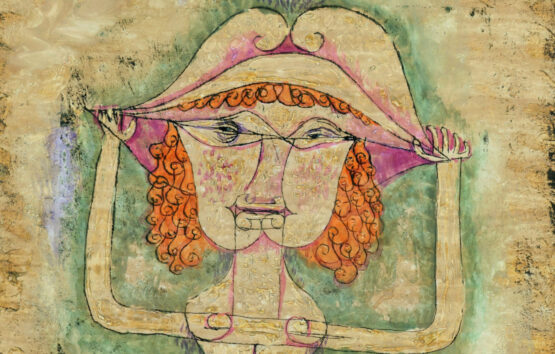Paul Klee •Music and Theatre in Life and Work
The exhibition 'Paul Klee – Music and Theatre in Life and Work' at Galerie Thomas traces Paul Klee’s musical tracks and his great interest in opera and the theatre. Paul Klee was not only a visual artist, but also a musician. In his youth, he had found it difficult to decide between the two professions, and although he eventually decided in favour of painting, his close affinity with music never waned: all his life he was an impassioned violinist and an enthusiastic and critical attendee of concerts and opera performances, especially in Munich.
However, music and visual art enjoyed a close relationship not only in Klee's life, but also in his work. Rhythms and melodies are reflected in landscapes, architectures and abstract compositions; the pathos and wit of the stage play form the basis of many of his figurative scenes. With around 40 paintings, watercolours and drawings from 1914 to 1939, Galerie Thomas illustrates how Klee was preoccupied with music throughout all phases of his creative life. They include known works, as well as those that have only rarely been seen in exhibitions, if at all, until now. The exhibition has two main focuses: on the one hand, there are the stage characters and masks, i.e. works arising from his passion for opera, theatre and puppet shows, and on the other hand, symbolic abstract watercolours and paintings whose composition is modelled on musical structures.
The highlight of the exhibition is the painting 'The Singer L. as Fiordiligi', 1923, a work, that Klee not only prepared very carefully, but also repeated several times. He recreated the figure no less than five times, more than any other motif in his oeuvre. Two versions can be seen in the exhibition: the first work from 1923 and the subsequent hand-coloured lithograph of 1923, which was derived from it and which
Klee gave away only to selected collectors. Another version is owned by the Bavarian State Painting Collections, Munich, and will be simultaneously on display in the exhibition at the Pinakothek der Moderne.
To accompany the exhibition, the eponymous catalogue book edited by Christine Hopfengart will be published by Wienand Verlag. With several contributions, from the art historical as well as the musicological
side, the richly illustrated catalogue provides an insight into Klee‘s ‘Double Life’ as an artist and musician - his particular existence as ‘painter-violinist“ – and the artistic stress field in which he moved.
